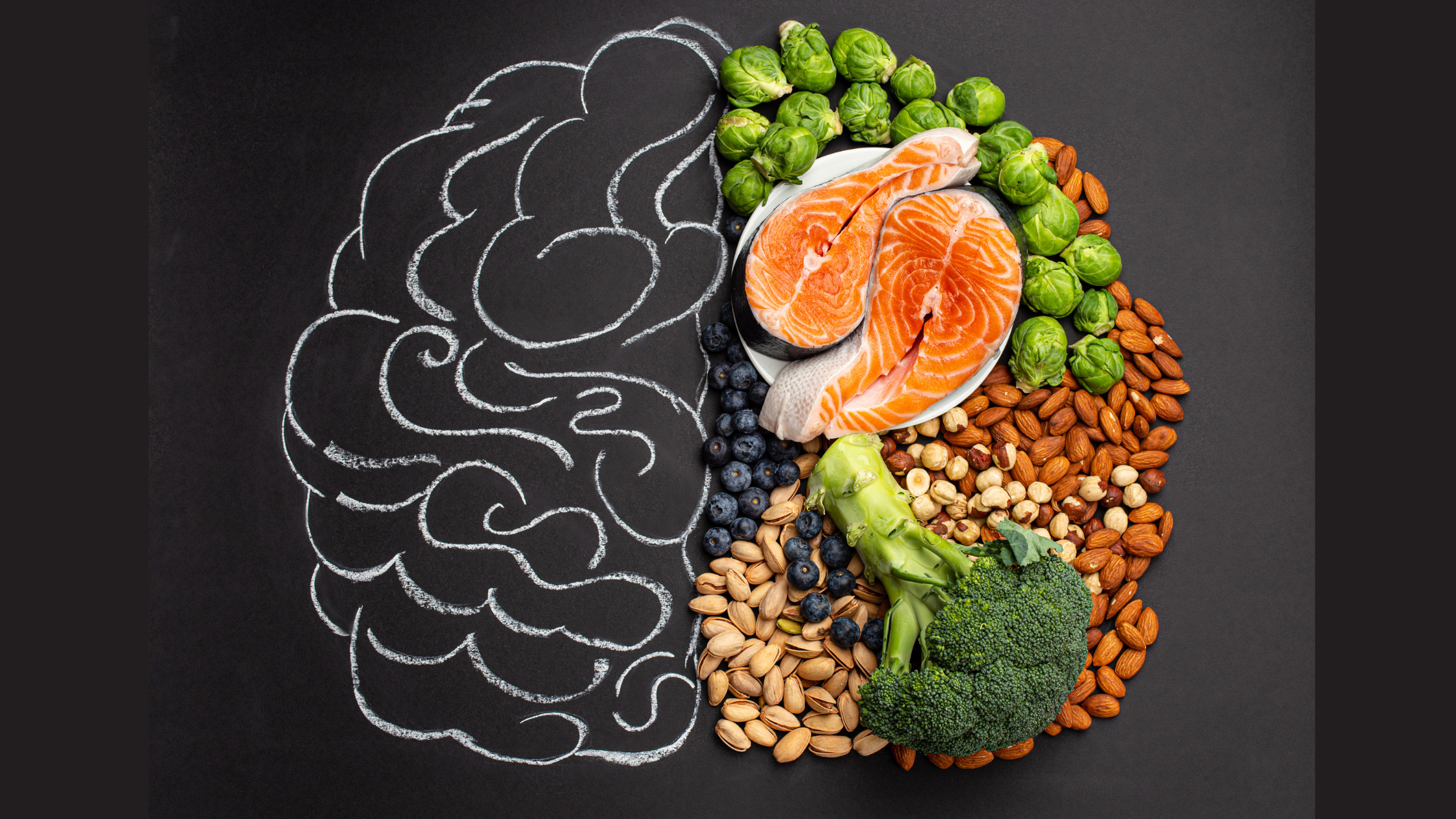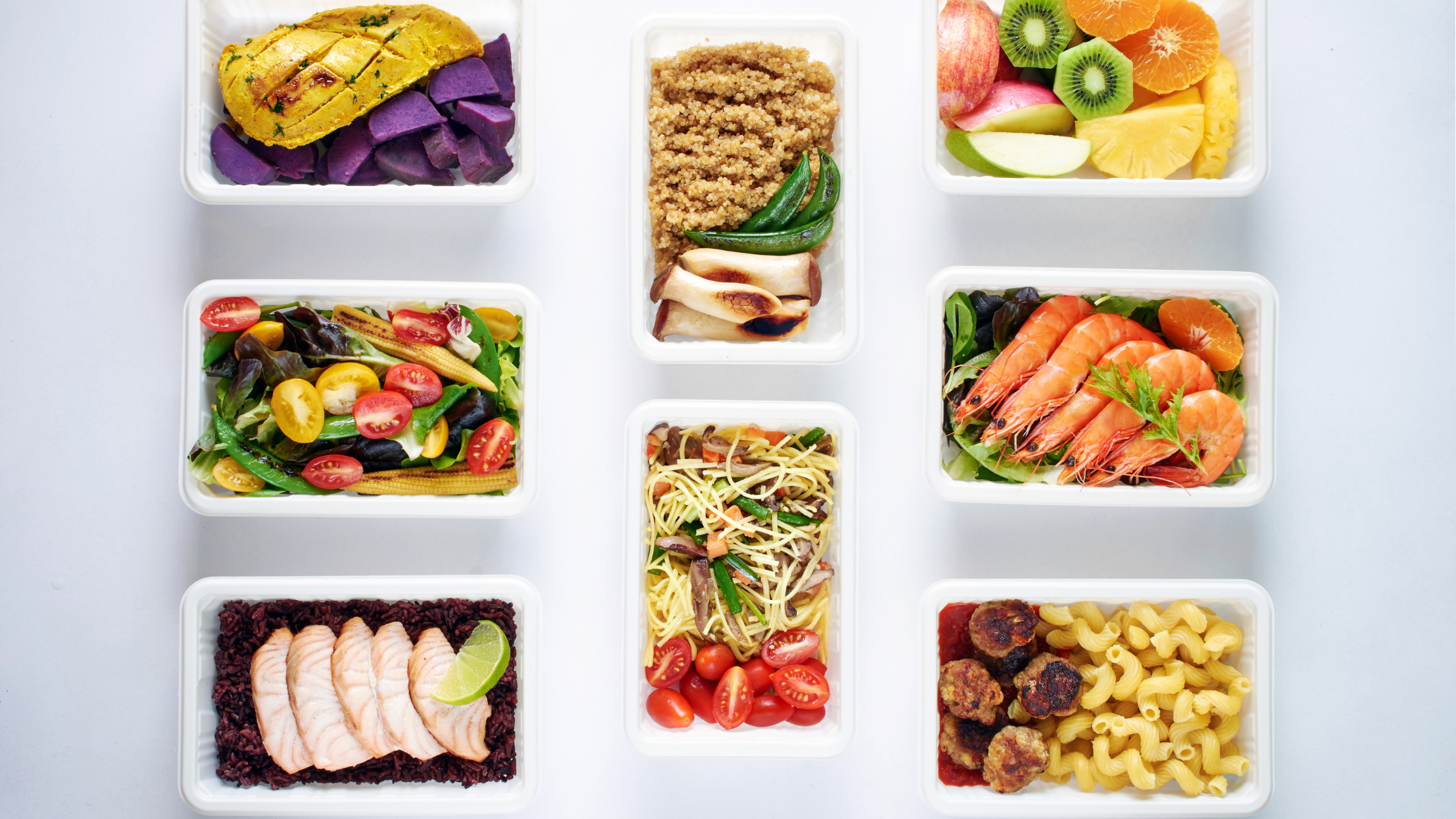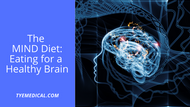The MIND Diet: Eating for Brain Health
Written by TYE Medical on Apr 6th 2023
What comes to mind when you think of the word “diet”? Most of us think of bathroom scales, growling stomachs, and self-deprivation. You might imagine chomping on celery stalks and passing up dessert every day.
But the MIND Diet and its close cousins the Mediterranean and DASH diets aren’t designed specifically for weight loss. However, dropping unnecessary pounds can be a welcomed benefit. The MIND diet and Mediterranean-DASH diets are often doctor-recommended eating plans to increase nutrition and thereby your health. The Mediterranean and DASH diets seek to improve lower cholesterol and blood pressure which can boost heart health.
It turns out that what’s good for your heart is also good for your brain. So, the latest developments have produced the MIND diet. It combines the best brain-boosting nutrition from both the Mediterranean and DASH diets to create an optimized eating plan for brain health.
Let’s take a look at what the MIND diet is and specific benefits of eating for brain health.
Purpose of the MIND Diet

What does MIND stand for? Be thankful for the acronym, because it’s a mouthful: the Mediterranean-DASH Diet Intervention for Neurodegenerative Delay. The MIND diet was created to delay cognitive decline or neurodegeneration. The idea is that if you follow the MIND diet, your odds for developing dementia or Alzheimer’s should decrease.
Origin of the MIND Diet
Dementia is the 5th leading cause of death in adults age 65 and older in the U.S. It’s the 7th leading cause of death overall, which means researchers are working overtime to decipher causes and solutions.
What they’ve found is that a decline in cardiovascular health increases the risk of cognitive decline and a deterioration of brain health. So, if you keep your heart healthy, your brain is healthier too. The MIND Diet was born from the research of Dr. Martha Clare Morris and associates at the Harvard Chan School of Public Health and the Rush University Medical Center. The research team published two papers that introduced the diet and its positive effects on brain health.
The MIND Diet identifies which foods and nutrients are beneficial in specific quantities. As with most diets, it suggests certain serving sizes for optimal benefit and to incorporate healthy calorie intake. The diet outlines 15 “dietary components” that are specifically “brain healthy” or unhealthy.
Research Results

People who participated in this study and had the highest scores for following the diet experienced cognitive decline at significantly slower rates. These results surpassed the success of both the Mediterranean or DASH diets individually.
In other words, this combined and improved diet performed as hoped and proved better than either of the original diets alone when it came to brain health. In fact, the MIND diet lowered the risk of Alzheimer's by 53% for participants who had the highest scores on the eating plan. Those who moderately followed the diet had a 35% lower rate of developing Alzheimer’s.
Besides brain and heart health, the DASH Diet may also have a positive effect on diabetes and certain cancers.
What is the MIND Diet?
Like its predecessors, the Mediterranean and DASH diets (Dietary Approach to Stop Hypertension) emphasize plant-based foods and limited consumption of animal products and foods high in saturated fats.
Instead, the MIND diet promotes eating foods that are “brain healthy” and limits or prohibits five specific unhealthy foods.
Following the MIND Diet

Other than the diet's basic guidelines and daily serving suggestions, the diet is very flexible and adaptable. This can be a good thing or a bad thing depending on your personality and preferences. This diet could be more difficult to follow if you don’t cook much or prefer eating out.
If this is the case, you’ll need to be more selective in which restaurants you frequent and choose ones that are friendly toward customized orders, i.e., “I’d like my fish grilled, light on the butter, and can I swap the fries for the vegetable medley?”
And the MIND Diet could also be challenging if you require portion guidelines, because the diet offers none. It provides suggested servings per day for each “brain healthy” food, but as far as meal plans and serving sizes for your meals, it’s lacking.
But you can get guidance about portion sizes and meal planning for popular nutrition sites. You can adapt healthy, plant-based meal plans to accommodate MIND diet guidelines.
“Brain Healthy” MIND Diet Guidelines

Whole grains: 3+ servings per day
Whole grain foods retain all three parts of the grain: the bran, germ, and endosperm, all of which have their own nutritional value. The bran contains most of the fiber as well as other nutrients and is missing from highly processed, white-flour based products.
Examples of whole grain foods include: brown rice, quinoa, wild rice, oats, corn, buckwheat, barely (not gluten free), and rye (not gluten free).
Vegetables (other than green leafy): 1+ serving per day
We know vegetables are filled with vitamins, nutrients, antioxidants, and fiber. Eating at least one serving a day that’s not also a leafy green is recommended.
Green leafy vegetables: 6+ servings per week
These vegetables are rich in vitamins A, C, K, and many other nutrients.
Examples of leafy green vegetables include: kale, broccoli, collard greens, spinach, cabbage, romaine lettuce, and turnip greens.
Nuts: 5+ servings per week
Your heart and brain can both get a boost from the healthy fats and proteins in nuts. A serving, which is generally ¼ cup, most days of the week can benefit your health.
Beans: 4+ meals per week
Lentils would also be included in this recommendation as both beans and lentils are in the legume family. They are rich in plant protein, fiber, folate, fiber, and other nutrients. Servings sizes are usually ½ cup. It’s recommended that you center at least four meals per week around these legumes, preferably swapping out red meat.
Berries: 2+ servings per week
These fruits are packed with antioxidants. You’ll find blueberries, raspberries, and bananas are found on many superfood lists.
The most nutritious berries include: blueberries, raspberries, strawberries, acai berries, cranberries, and even bananas and grapes.
Poultry: 2+ meals per week
This commonly includes chicken and turkey, making it a widely consumed source of lean protein. One three-ounce serving is about 26 grams of protein. That’s about the size of a deck of cards. Make poultry the star protein of at least 2 of your weekly meals.
Fish: 1+ meals per week
Fatty fish are best and include salmon, tuna, trout, mackerel, and sardines. These varieties have high amounts of Omega-3 fatty acids that reduce inflammation and promote heart and brain health.
Fats: mostly olive oil when used
This is considered one of the healthiest and most ancient oils. It’s high in healthy fats and antioxidants that protect against cancer. The monounsaturated fats in olive oil are believed to reduce inflammation which is the underlying cause of many diseases. Use olive oil at lower heat and save high-heat cooking for other oils like coconut or canola.
MIND Diet Guidelines for Unhealthy Foods

These foods are higher in saturated and trans fats which have a negative impact on brain health.
Pastries and sweets: less than 5 servings per week
Aside from the unhealthy fats in these items, they’re also high in sugar which is known to trigger inflammation. And inflammation isn’t a friend of brain health. But you may be pleasantly surprised to find that you can indulge in these treats to some degree. Just be sure to check portion sizes. Your “one serving” could actually be three.
Red meat (like pork, beef, lamb, and products made from them): less than 4 servings per week
If you love red meat or dairy milk, don’t despair. You can have up to 3 servings per week. Just be careful to watch serving sizes and be selective, choosing your favorites so you don’t feel deprived.
Cheese and fried foods: less than 1 serving per week
At less than one serving per week, you probably can’t opt for both in the same 7-day period. But you could indulge in a small fry one week and an ounce of your favorite cheese the next.
Butter/stick margarine: less than 1 tablespoon per day
According to the mayo clinic, stick margarine has more saturated fat than spread margarine. If you prefer margarine, choose a tub that has less than 10% of the daily value for saturated fats and forgo stick variety. Be sure to keep an eye on how much you’re using, especially if you use it more than once per day.
Getting Started with the MIND Diet

You can use these guidelines as your meal plan and search for plant-based recipes. If you have time, you can adapt existing recipes to create MIND diet-friendly recipes. You can also find assorted meal plans on the web.
To get started, try this one-week MIND Diet meal plan from Eating Well.
An eating plan that reduces inflammation while improving heart and brain health is an all-star option worth trying.


